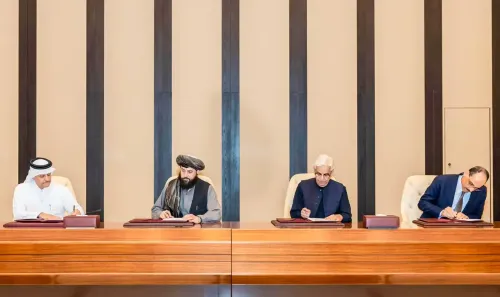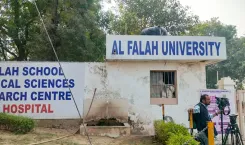What Led to the Collapse of the Boiler Tower at the Ulsan Power Plant?

Synopsis
Key Takeaways
- Seven lives lost in Ulsan power plant collapse.
- Joint forensic investigation launched by South Korean authorities.
- Focus on structural integrity of the boiler tower.
- President Lee vows to ensure accountability.
- Need for improved workplace safety measures.
Seoul, Nov 18 (NationPress) South Korean officials initiated a joint forensic investigation on Tuesday following the tragic collapse of a boiler tower at an Ulsan power facility, resulting in the loss of seven lives.
The investigation team comprises members from the Ulsan Metropolitan Police, Gyeonggi Nambu Provincial Police, National Forensic Service, the labor ministry, and other relevant agencies. They will examine debris from the collapse in search of clues pertaining to the November 6 incident, as reported by Yonhap News Agency.
Initially, nine workers were trapped when the 63-meter boiler tower fell at a thermal power plant operated by Korea East-West Power Co., a state-owned utility, located in the southeastern city of Ulsan.
While two workers managed to escape with injuries, the other seven tragically lost their lives.
The focus of the investigation will likely be on the sections of the tower that were compromised in preparation for its demolition, which was scheduled after 40 years of operation concluding in 2021.
Authorities from the police and the labor ministry aim to combine the findings of the investigation with testimonies from officials and construction-related documents to ascertain the cause of the accident and any potential legal violations.
On November 16, South Korean President Lee Jae Myung expressed his commitment to uncovering any safety oversights at the thermal plant site in Ulsan where the deadly accident occurred, promising strict accountability for those responsible.
“As the person ultimately responsible for public safety, I am deeply saddened,” Lee stated on Facebook. “Despite the public's hopes, all seven workers who were trapped have returned to their families as deceased. My heart is broken.”
Lee characterized the incident as one that “should not have occurred” and pledged to implement measures to avert similar tragedies.
“I will ensure that such a disaster does not recur. We must eliminate the conditions that turn workplaces into sites of death,” he emphasized.
The president called for a prompt and thorough investigation to ascertain the precise cause of the incident and vowed to take strict punitive actions against anyone found responsible, irrespective of their rank.
Additionally, he urged relevant ministries to reassess safety measures at job sites from the ground up and implement necessary safety protocols for the winter months.
In a separate message on X, Lee remarked that rewarding merit and penalizing faults is fundamental to effective organizational management.
His comments were interpreted as a backing for his administration's inquiry into whether public officials were involved in any misconduct related to last year's flawed martial law attempt, while also seeking initiatives to enhance civil service morale.
On November 11, the government revealed plans to establish a task force and announced a series of initiatives aimed at bolstering public administration and revitalizing the civil service the following day.









